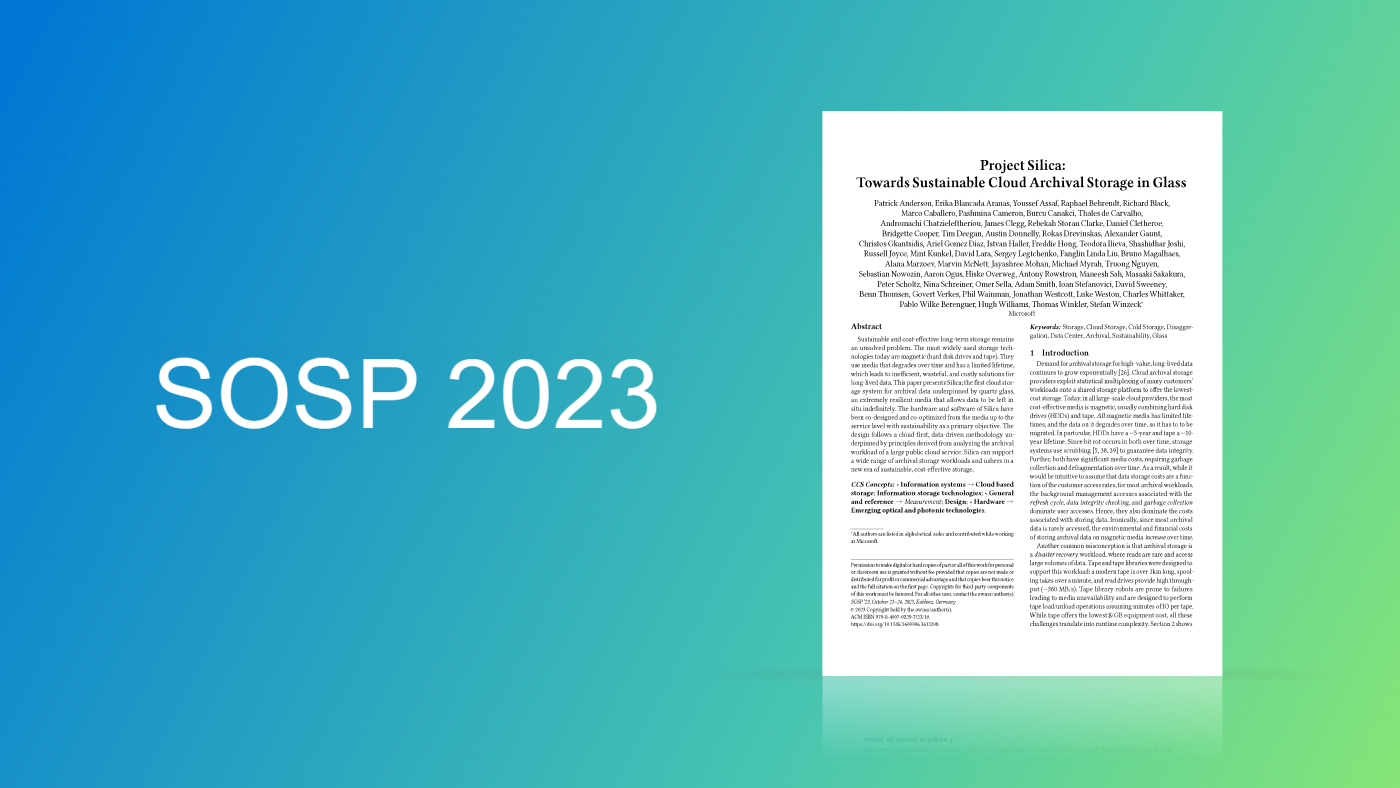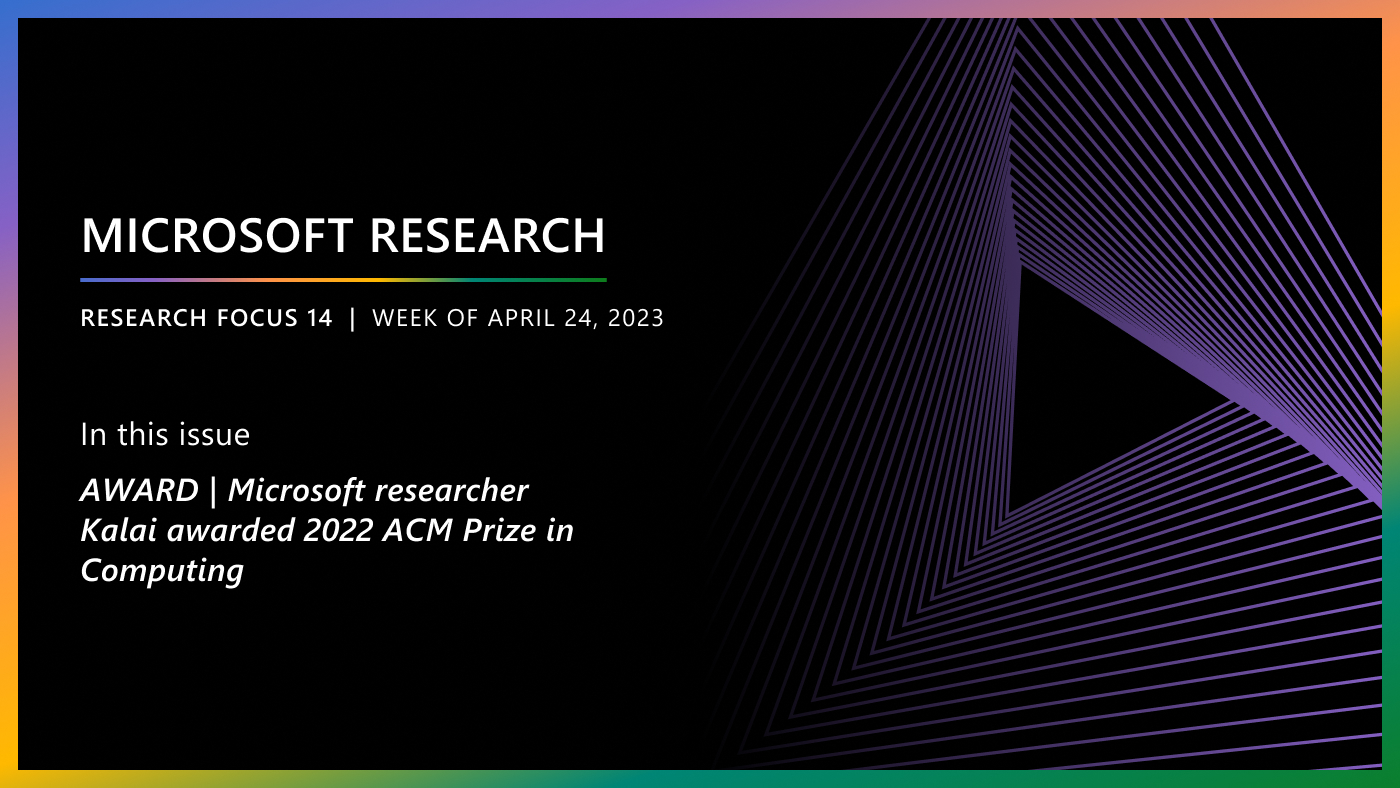The cloud is an enormous success story. Microsoft Azure, the company’s cloud offering, was launched in 2010. It has grown by more than ten times in the past five years and is now operating in 54 regions around the world. Azure Chief Technology Officer, Mark Russinovich, asserts that “the fundamental disruption that the cloud is creating is based on instant access to compute and infinite storage” and thereby sets challenging targets for key cloud infrastructure across storage, networking, and compute.
There are, however, imminent barriers the cloud faces. Technology growth curves, across almost all cloud resources, are starting to (or are expected to) tail off (see Figure 1). A key reason for this is that current infrastructure technologies were conceived before the cloud era, so these legacy technologies are unsuited to address today’s ever-evolving cloud environment. This means that disruptive, not incremental, innovation is needed to find alternative technologies for cloud infrastructure.
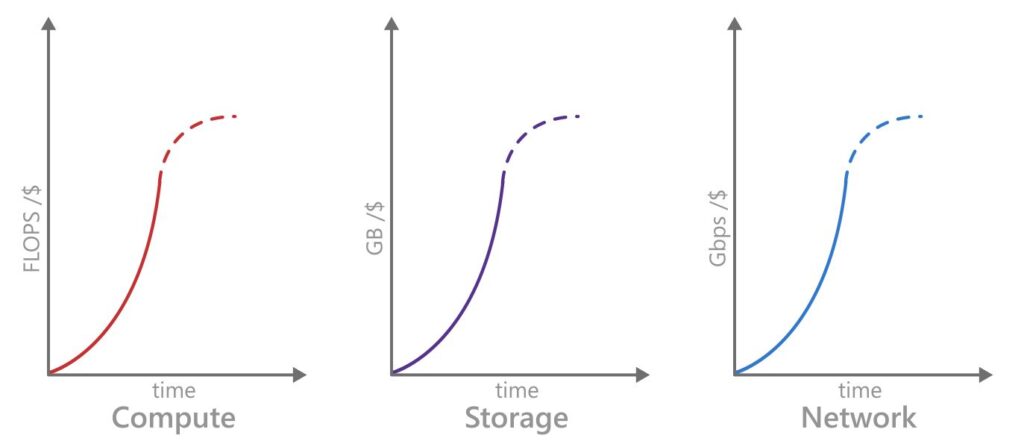
Figure 1: Barriers to current cloud technology are imminent across three key areas. The graphs illustrate how we have been able to deliver exponential growth in performance at approximately the same cost by pushing existing technologies, but they also show how these existing technologies are running out of steam (dashed lines) to meet future demands. The end of Moore’s Law in compute, similar phenomena in storage and networking (also due to the limitations of CMOS scaling), and the fact that data volume is growing at an exponential rate are all issues for cloud technology in its current state.
Microsoft research podcast
Collaborators: Silica in space with Richard Black and Dexter Greene
College freshman Dexter Greene and Microsoft research manager Richard Black discuss how technology that stores data in glass is supporting students as they expand earlier efforts to communicate what it means to be human to extraterrestrials.
To accelerate this innovation in optics for the cloud, we have started collaborations with top optics groups at universities on related research questions as well as building up our own cross-disciplinary team and facilities in house. Today, our Optics for the Cloud team has almost 30 people working on projects across three dimensions: storage, networking, and compute (see Figure 2). A big step toward advancing the field of optics in these three areas, while ensuring a high-level of ambition and innovation necessary to really impact the cloud space, is creation of the Optics for the Cloud Research Alliance, which is designed to uniquely facilitate new research between universities and Microsoft Research.
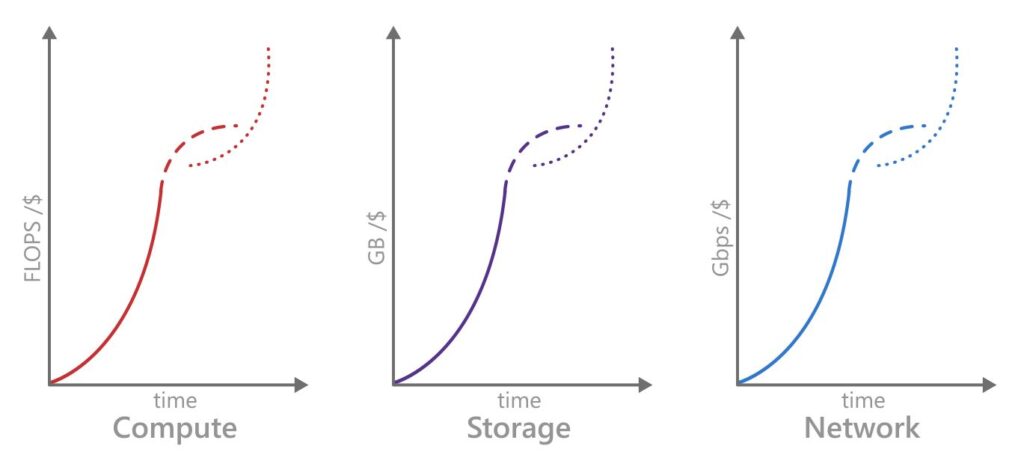
Figure 2: We are inventing new disruptive optical technologies for the Cloud that enable new growth as shown here. Using these new technologies and collaborating through programs like the Optics for the Cloud Research Alliance, we hope to make large advances in all three areas using optical solutions.
The alliance comprises six universities: École Polytechnique Fédérale de Lausanne (EPFL), Eindhoven University of Technology (TU/e), University College London (UCL), University of California, Santa Barbara (UCSB), University of Cambridge, and the University of Southampton, with discussions underway with several other universities.
“Optics for the Cloud is our first chance to bring intelligence into optics to open up applications in the digital world that we haven’t even thought of. To create a world where optical fibers and systems are more than dumb pipes!”–Polina Bayvel, professor of Optical Communications at University College London and head of the EPSRC TRANSNET Programme.
The alliance takes a multi-disciplinary approach to tackle big and open challenges, focusing on pre-competitive research questions, and with the aim of enabling greater adoption of optical technologies in cloud infrastructure. The research spans a significant part of the cloud ecosystem, ranging from photonics fabrication, via optical system and sub-system design, to co-design and integration with the rest of the data center stack.
One of the keys to the alliance is that it is mutually beneficial for optics research at both the universities involved and Microsoft. Universities, which tend to think five-to-ten years into the future, can have their research findings and fundamental advancements influence the development of next-generation cloud technology. Microsoft, on the other hand, can collaborate on long-term, mostly pre-competitive research ideas with leading research groups in the field and nurture the talent that is necessary for the field to grow and flourish.
“…Research can go and look further out ahead, 3, 4, or more years down the road, start to work on technologies that are risky, where there are a lot of unknown questions, knowing that if those questions get solved and we can figure out how to incorporate the solutions into engineering systems in Azure, this can create enormous impact, really change the way that customers build applications and make use of the cloud,” says Ant Rowstron, head of the Optics for the Cloud team at Microsoft Research Cambridge.
This type of collaboration leads to faster advances in the technology and shifts thinking to a broader perspective for all researchers involved. “Yes, we do need to invent, but the invention is a small part of what is needed to make something—in volume—faster, cheaper, and better. That’s why I’m so keen to work with Microsoft—because that’s something they know about and we don’t,” says Sir David Payne.
In order to further support research and grow the network for the alliance, Microsoft funds a cohort of, currently, ten three-year PhD scholarships, which target long-term problems and aim to advance the state of the art through forward-looking fundamental research that will be published in prestigious channels.
“Industry and universities have different cultures, and those cultures should be celebrated.”–Sir David Payne, director of the Optoelectronics Research Centre and professor at University of Southampton
Each PhD student is hosted and supervised by a university faculty member and co-supervised by a Microsoft researcher. The students also benefit from discussion, insights, and feedback from practitioners at Microsoft and, more broadly, through greater interaction with partners in industry and academia.
“In my experience, research has the greatest impact when different disciplines interact and researchers learn to communicate across traditional boundaries,” says Dan Blumenthal, head of the Optical Communications and Photonic Integration Group and professor at UCSB. “The initial investment in time and resources involved in bringing together experts from different layers of the network and communication stack leads to rapid acceleration in the pace of innovation.»
The recent collaboration with UCL PhD Student Kari Clark is a great example of how the Optics for the Cloud Research Alliance can benefit the research and ultimately the student through joint investigation. Kari and his supervisor, Zhixin Liu, worked closely with researchers at Microsoft Research Cambridge to tackle the problem of sub-nanosecond clock and data recovery, a critical technology to enable the long-term vision of all-optical data center networks. The specific solution devised by the team shows the benefits of researchers from different disciplines working together and from adopting a clean-slate approach tailored to the cloud environment and cloud workloads. In this case, it led to a radically different and practical solution to a long-standing problem in the networking space. The results of this research have been published jointly as a post-deadline paper at the 44th European Conference on Optical Communication, and Kari was awarded the prestigious EPSRC Connected Nation Pioneers Competition for his innovative work.
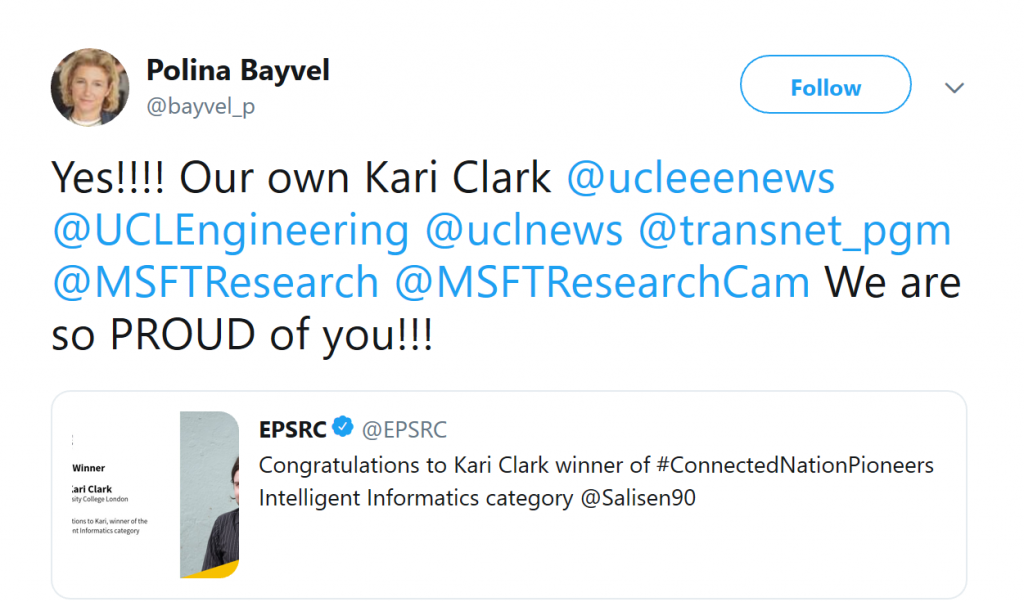
Professors, PhD students, and Microsoft researchers benefit from the collaborative spirit of the Optics for the Cloud Research Alliance.
Concurrently, Optics for the Cloud is a key research theme at Microsoft Research Cambridge and includes projects like the networking-focused Project Sirius, Project Iris, and storage-focused Project Silica. To illustrate how we are driving optics innovation across these projects in-house while collaborating with alliance members, let’s examine how Project Silica has developed since its inception.
Project Silica aims to create a new data storage system for long-lived archival data within the cloud, known as cold storage. It uses a new high capacity optical storage technique based on five-dimensional writing of data into silica glass with femtosecond laser pulses. It is a collaboration with the University of Southampton and began with fundamental advances at the university in femtosecond material processing and the realization that the effect could be used to store data.
On recognizing the potential of this technology, Microsoft Research Cambridge has been able to bring a large, interdisciplinary research team with skills in microscopy, electronics, computer systems, and storage system design to the collaboration. In fact, there are many scientific research challenges beyond the physical effect, and Microsoft Research brings a proven track record in taking research in storage systems through to impact.
At Southampton, the University has been able to concentrate on understanding the fundamentals of the physical effect and rely on Microsoft to use the power of the cloud and big data techniques to analyze samples and understand the best way to scale each advance to maximum effect. Even Microsoft’s world-leading skills in machine learning have been used to vastly increase the capacity and speed of the prototype storage systems under development.
“The biggest discoveries arise when different technologies come together. Cross-disciplinary research will definitely bring benefits.”–Peter Kazansky, professor at the Optoelectronics Research Centre at University of Southampton
We are confident that current and future alliance members will benefit from the synergies between leading academic teams and Microsoft Research. Through the alliance, teamwork between universities and Microsoft Research Cambridge continues to grow in new ways and seeks to expand to new projects, working toward innovative solutions for challenges in cloud computing at a global scale.
The benefits for Microsoft are tangible, as Mark Russinovich sees it. “We don’t believe that all the great ideas come from Microsoft. Ideas come from lots of places, so it’s really important that we work with the entire ecosystem, academia and industry, to find the best talent and the best ideas, and nurture them.” He goes on to assert the joint effort is mutually important to the universities as well. “That’s exciting work for people in academia, to go after things that, when they solve them, have the power to transform the world.”
For more information, go to www.microsoft.com/en-us/research/group/optics-for-the-cloud/



